Crepe Myrtles are deciduous flowering trees used widely in Australian landscapes for their consistent summer blooms, compact growth habit, and bark character. Suitable for small gardens, urban streetscapes, and feature planting. Reliable in most temperate zones. Low maintenance once established.
Mature height range: 3–8 m (variety dependent)
Form: Upright or vase-shaped
Flowering: Late spring through summer
Foliage: Green. Turns yellow or red in autumn before dropping.
Bark: Peels in thin sheets. Smooth trunk with multi-tonal patterning in winter.
Root system: Non-invasive
Growth rate: Moderate to fast
Suitability: Small to medium gardens, full sun sites, boundary or feature use

Performance Overview
Sunlight requirement: Full sun only. Minimum 6 hours direct light. Reduced flowering in partial shade.
Soil requirement: Must be free-draining. Tolerates loam, sand, or light clay if improved. Unsuitable for waterlogged or compacted soil.
Climate range: Thrives in warm to temperate zones. Mature trees tolerate light frost.
Drought performance: Strong. Deep-rooted once established. Minimal supplemental watering required in most conditions.
Watering (establishment): Deep water twice weekly for 12–24 months. Reduce frequency once established.
Watering (mature): Deep water only in prolonged dry periods.

Maintenance & Pruning
Pruning timing: Winter (dormant season only)
Technique: Remove internal crossing branches. Maintain upright or open vase shape. Avoid “topping” or heavy cutting.
Goal: Strengthen structure. Improve air flow. Promote consistent flowering.
Fertiliser: Optional. Use balanced, slow-release fertiliser in early spring if growth is poor.

Transplanting & Propagation
Transplanting: Bare-rooted Crepe Myrtles transplant easily in winter. Lower transplant shock. Lightweight and easy to handle.
Best time to plant: Late autumn to early spring (bare-rooted). Any time (container-grown), if watered correctly.
Propagation method: Softwood cuttings. Take 15 cm non-flowering tips in late spring. Remove lower leaves. Dip in rooting hormone. Plant in well-drained propagation mix. Keep moist until roots form.

Seasonal Cycle
Spring: Budburst and early growth
Summer: Full flowering and active growth
Autumn: Leaf colour change and drop
Winter: Dormant. Bark becomes dominant feature

Disease and Issues
Primary concern: Powdery mildew
Cause: Poor air circulation, high humidity, overhead watering
Management: Full sun positioning, correct pruning, avoid wetting foliage
Control: Fungicide if needed. Use clean tools. Remove affected leaves.
Other considerations: Mulch base without contacting trunk. Keep planting area weed-free.

Frequently Asked Questions
Is it evergreen? No. Fully deciduous.
When does it flower? Late spring through summer.
Is the bark decorative? Yes. Peeling bark reveals smooth, multi-toned surface.
How fast does it grow? Moderate to fast depending on site.
Can I plant near paving? Yes. Root system is not invasive.
Will it flower in part shade? No. Requires full sun for reliable blooming.
Do I need to prune annually? Yes, but only light structural pruning. No hard pruning.

Common Varieties
‘Zuni’ – Pink flowers. Small size. Suited to compact spaces or under powerlines.
‘Natchez’ – White flowers. Grows up to 6 m. Distinctive cinnamon bark.
‘Tonto’ – Bright pink flowers. Medium size. Dense canopy.
‘Tuscarora’ – Deep pink flowers. Medium size. Strong summer colour.
‘Lipan’ – Lavender-pink flowers. Medium size. High flower density.
‘Sioux’ – Mauve flowers. Medium size. Uniform shape. Popular for boundary planting.

Selection Criteria
Choose Crepe Myrtle if you need:
-
A summer-flowering feature tree
-
Compact to medium size (3–8 m)
-
Low water use once established
-
A non-invasive tree for near buildings or paving
-
Bark interest and seasonal structure
Avoid if you need:
-
Year-round canopy cover
-
Dense, shaded areas
-
Evergreen foliage

Availability
We supply Lagerstroemia indica in a range of advanced container sizes and bare-rooted stock (seasonal). All trees grown on-site for Australian conditions. Contact us for availability by variety or to match a cultivar to your planting requirements.
-
'Zuni' (Pink)
-
'Natchez' (White)
-
'Tonto' (Pink)
-
'Tuscarora' (Deep Pink)
-
'Lipan' (Lavender Pink)
-
'Sioux' (Mauve)



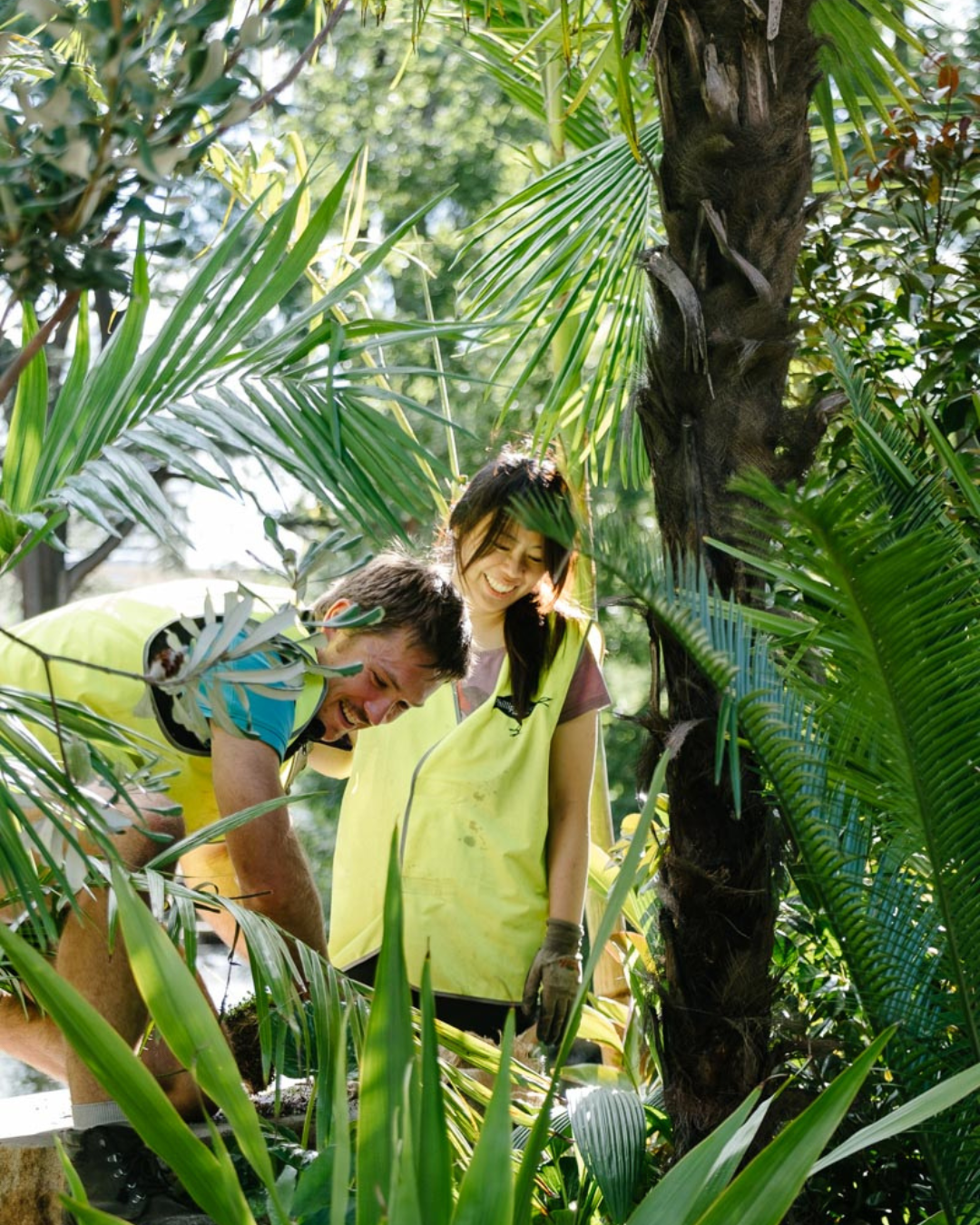

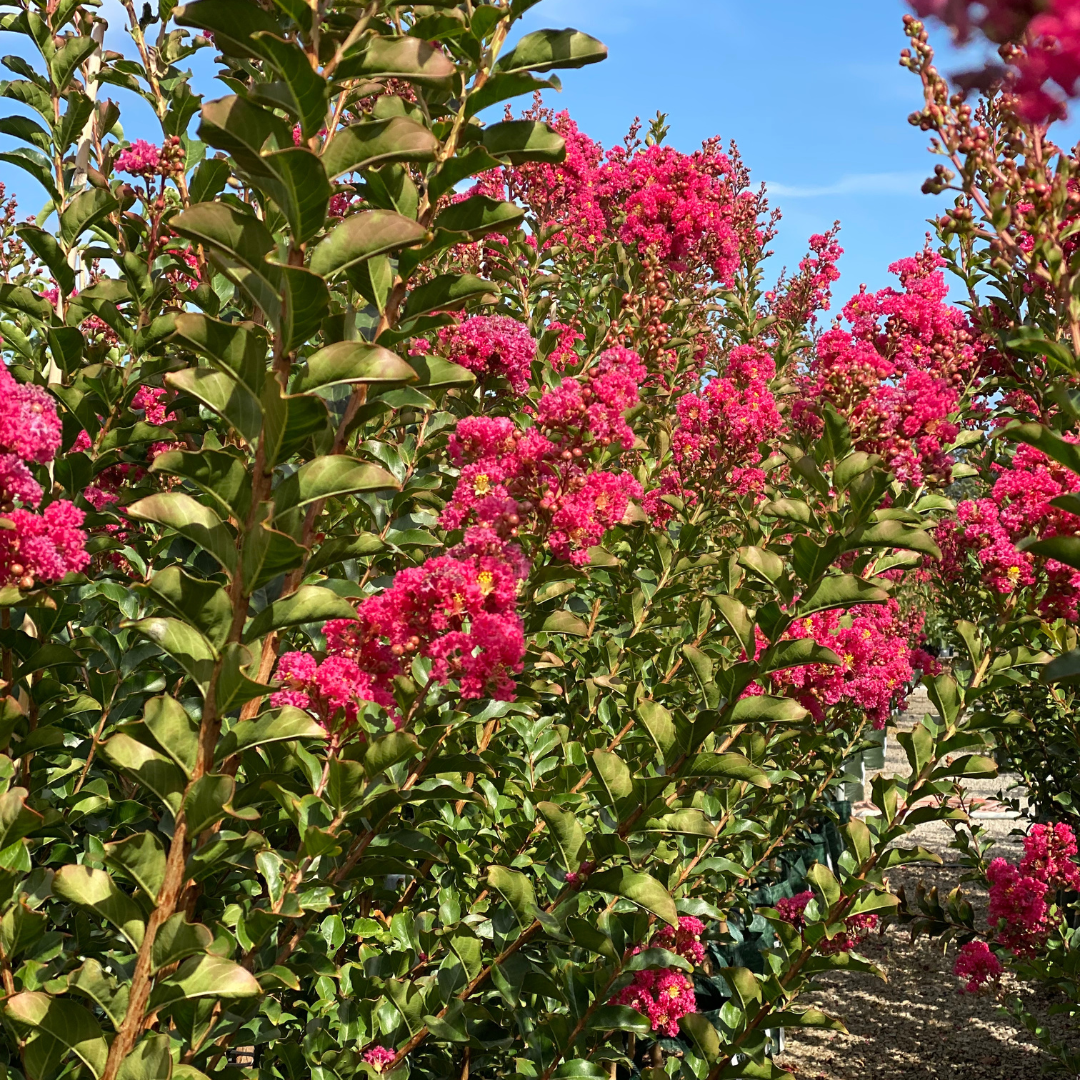


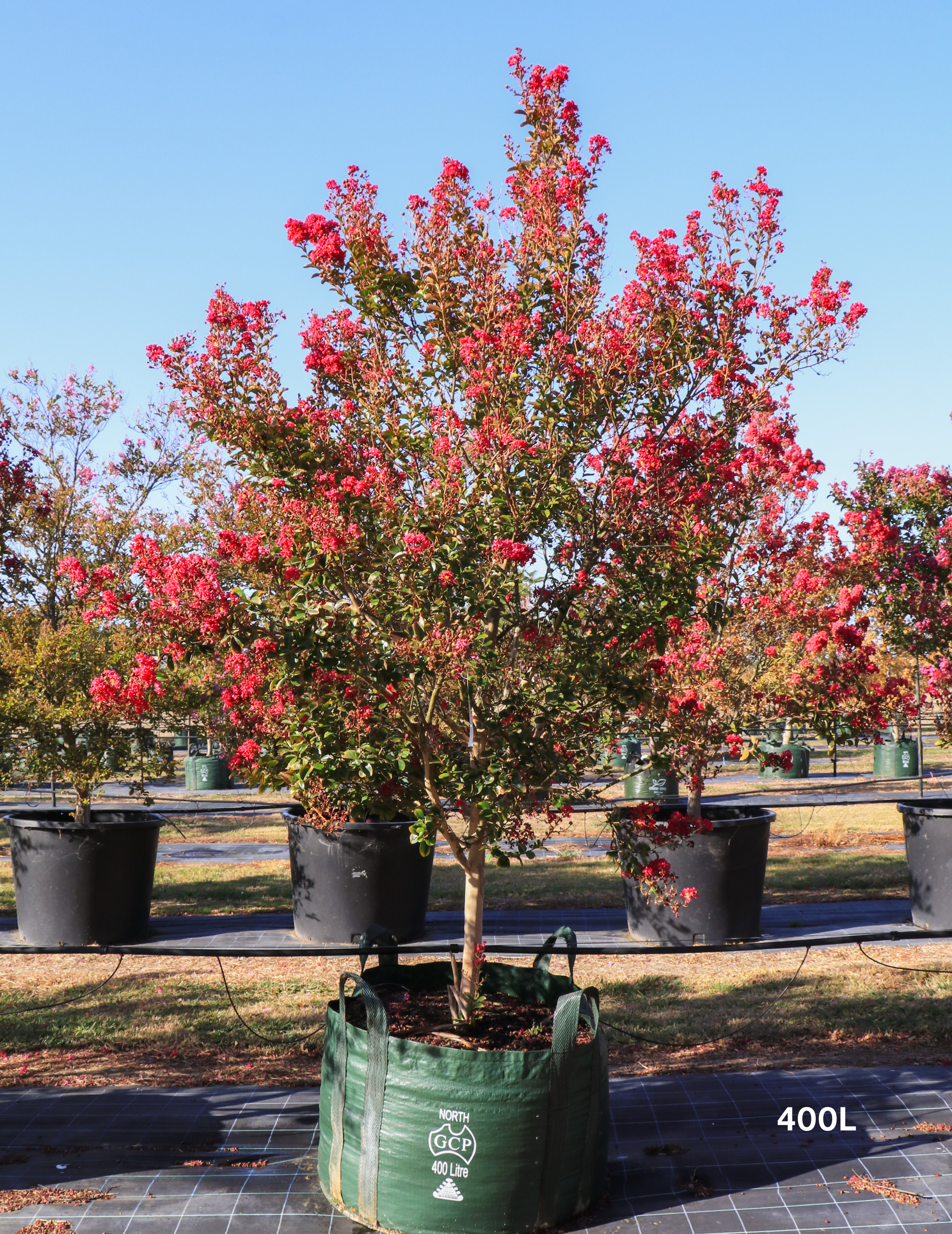
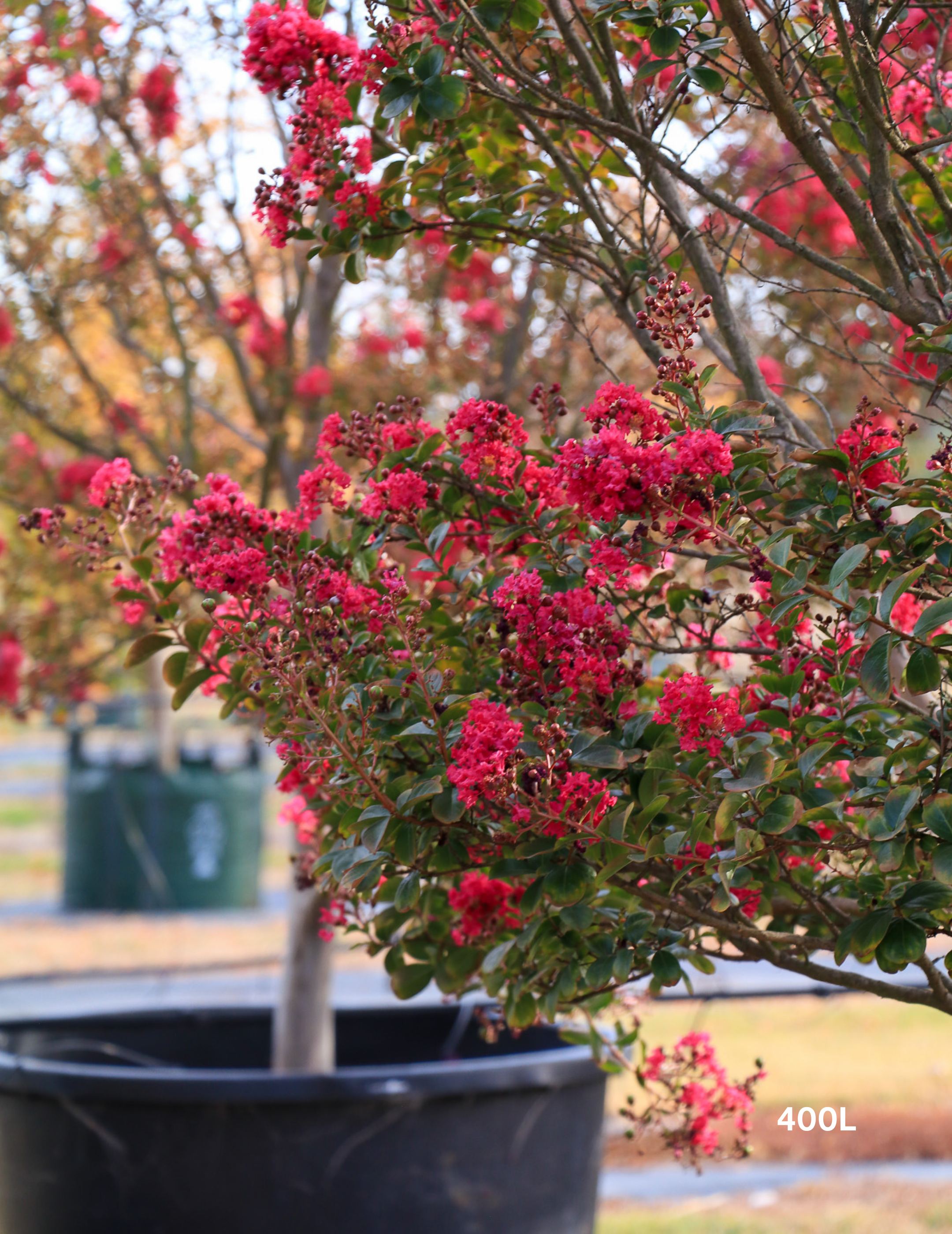
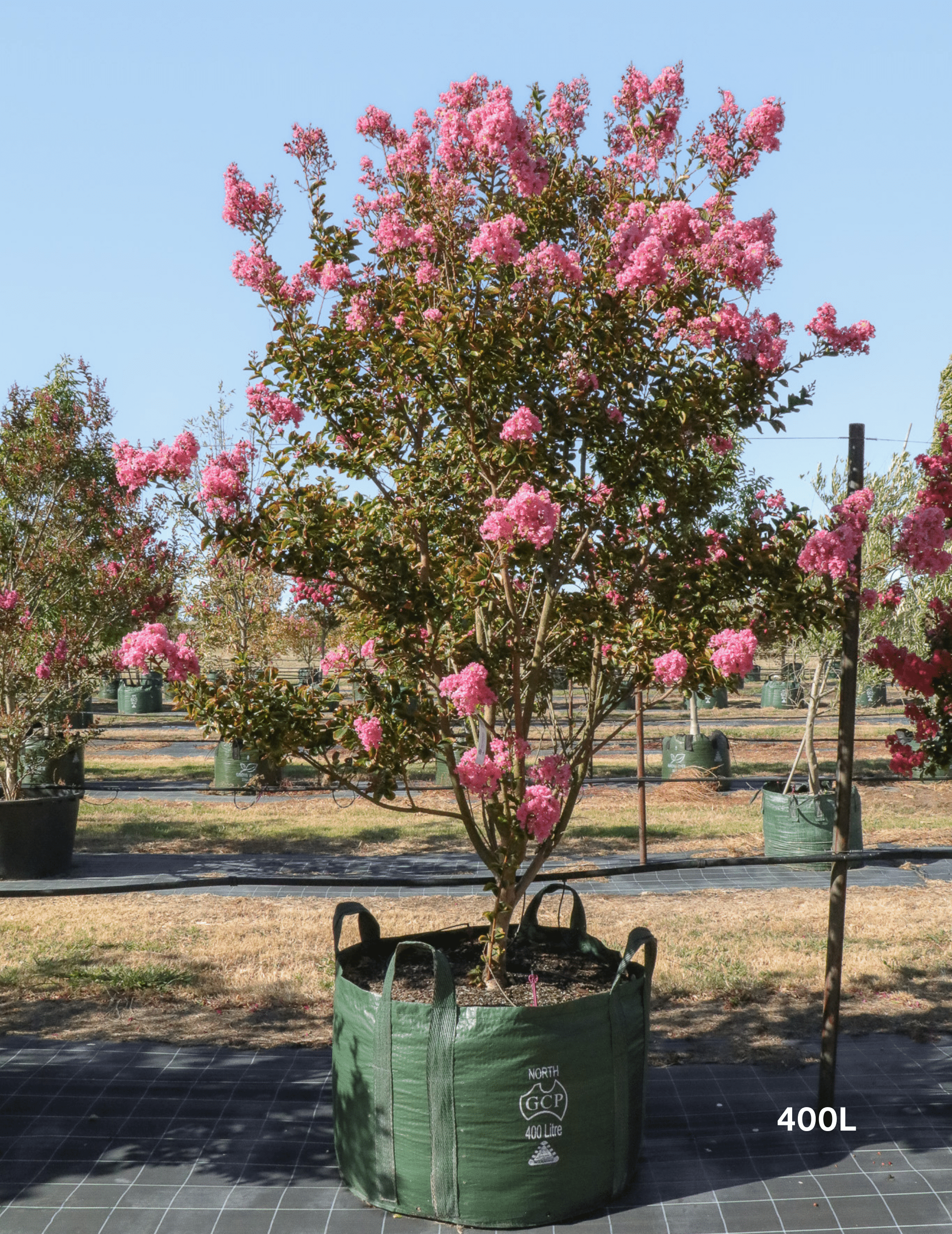
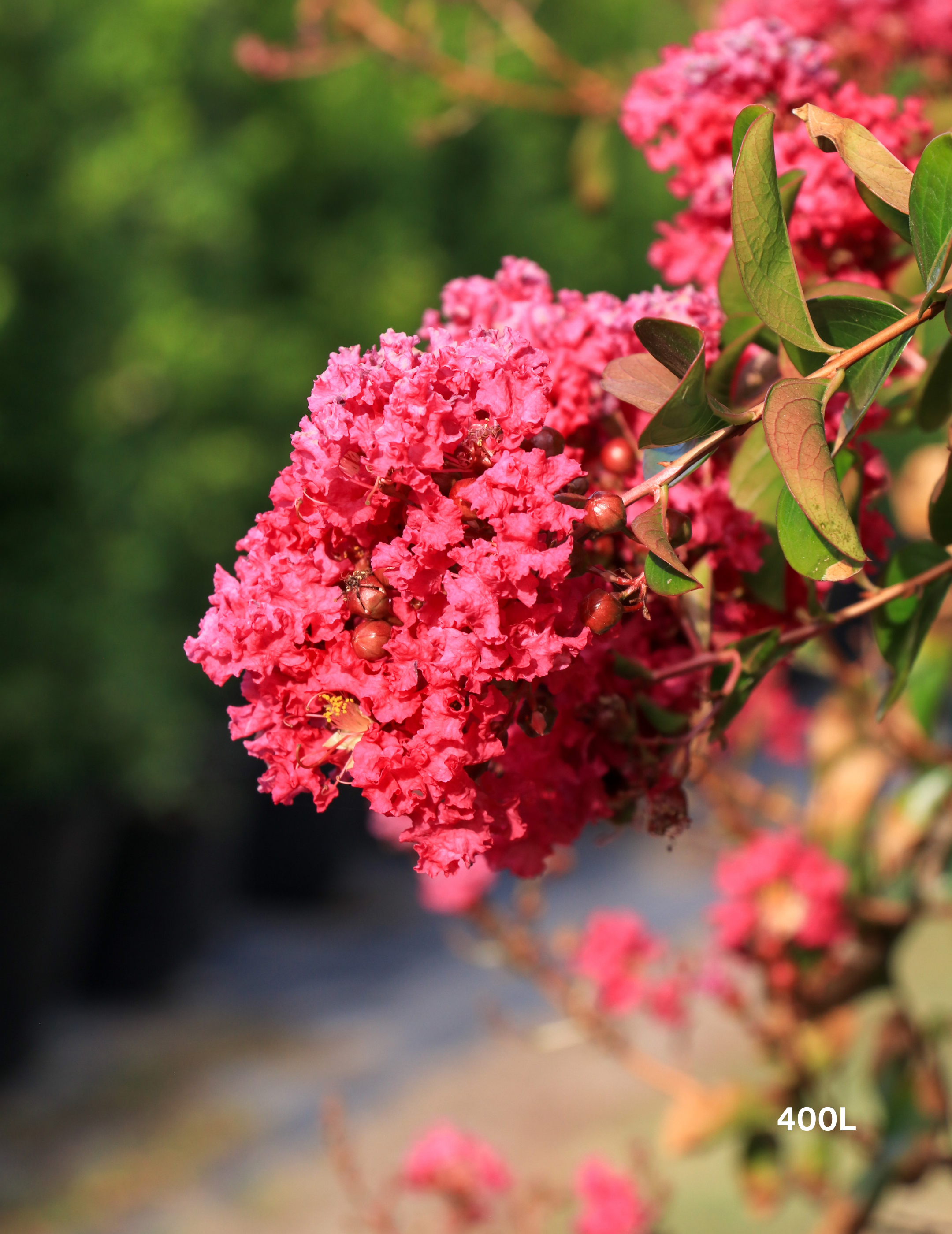
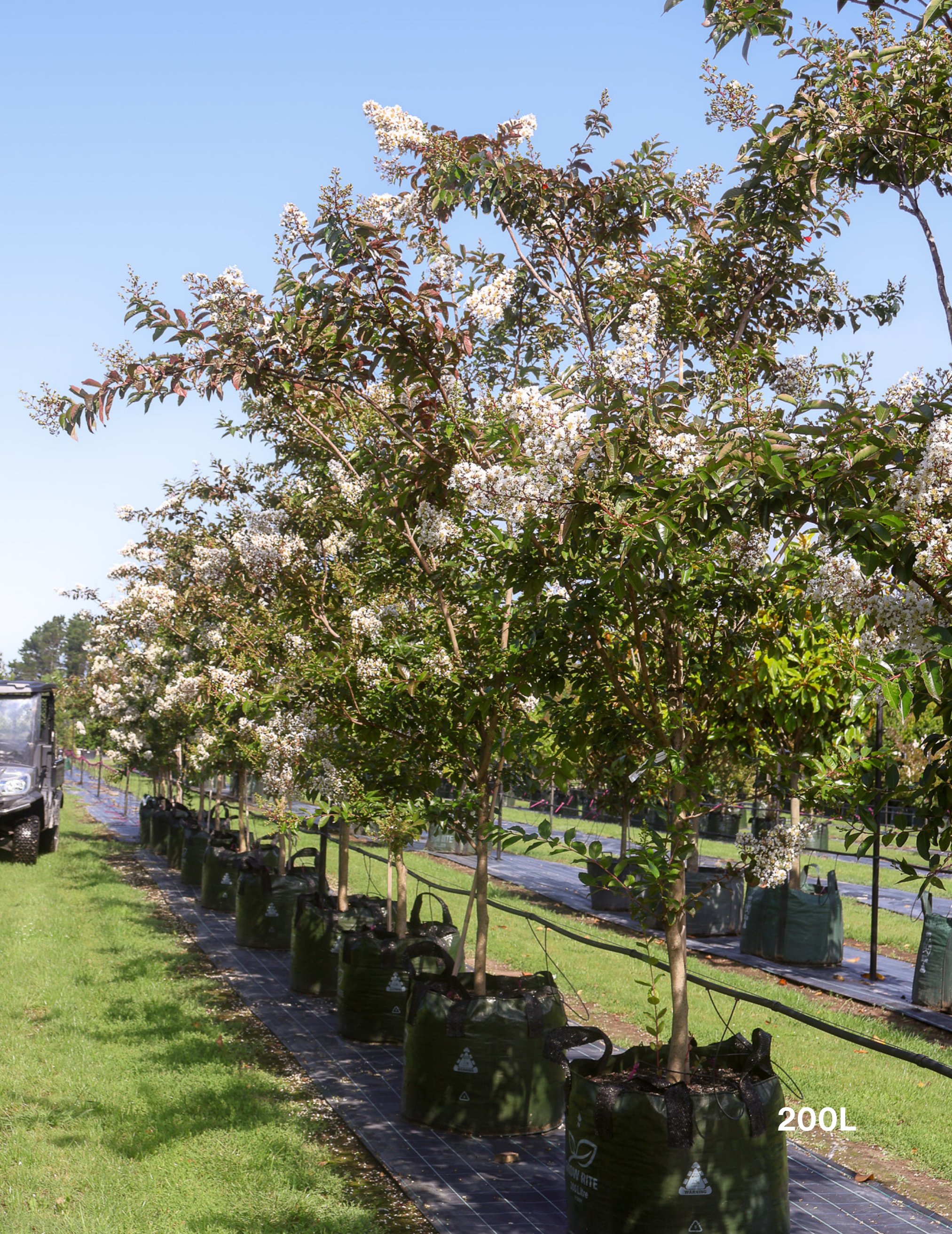
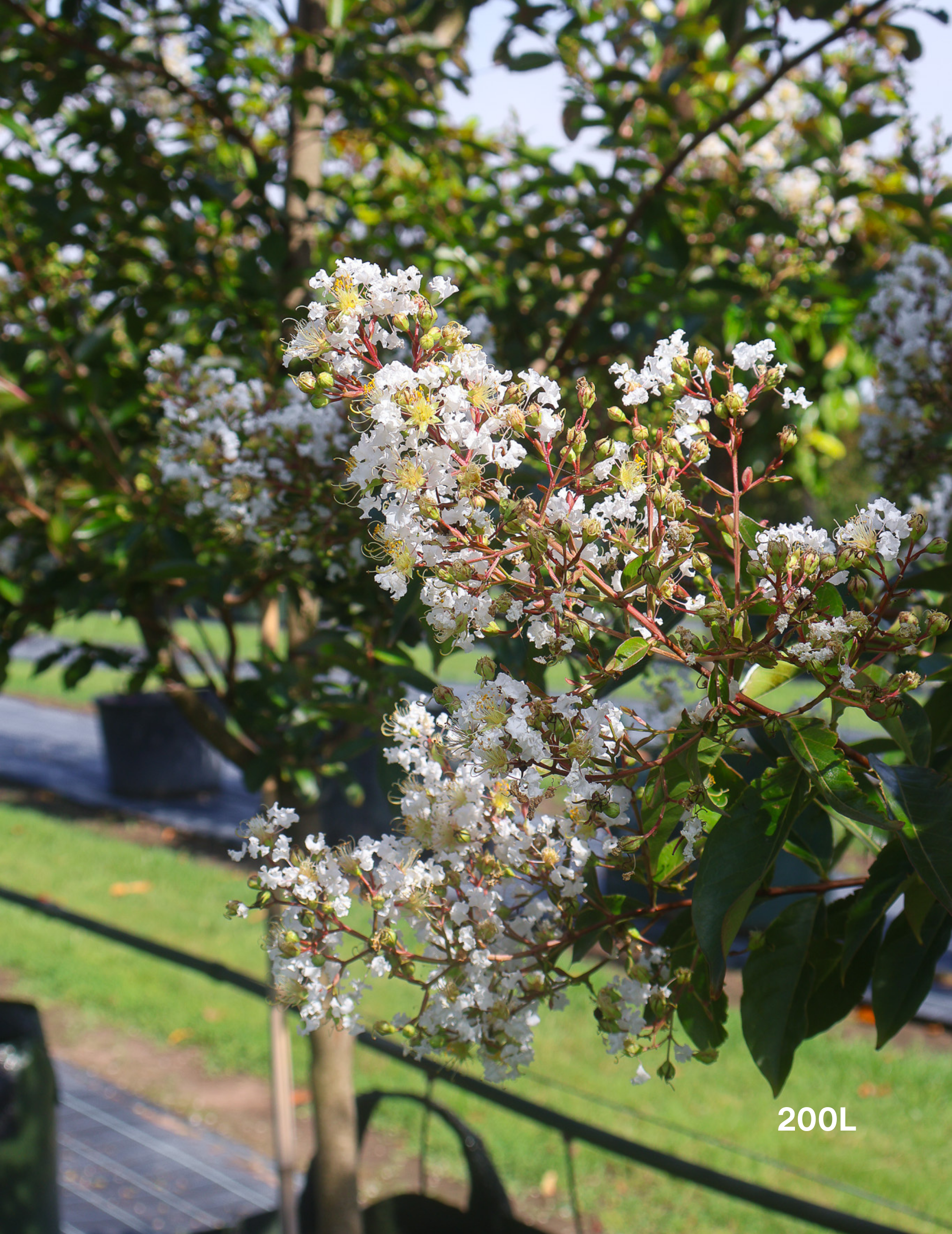
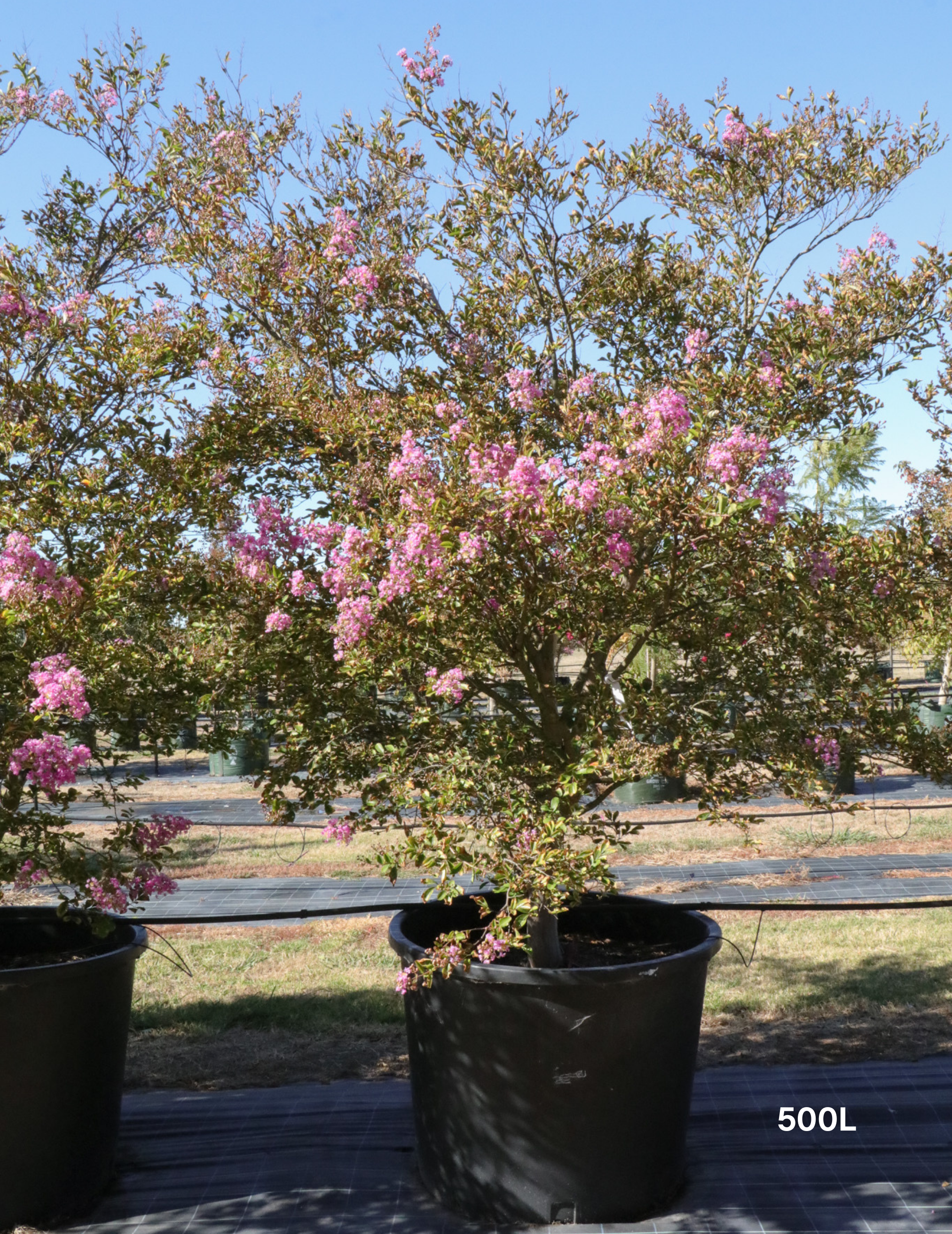
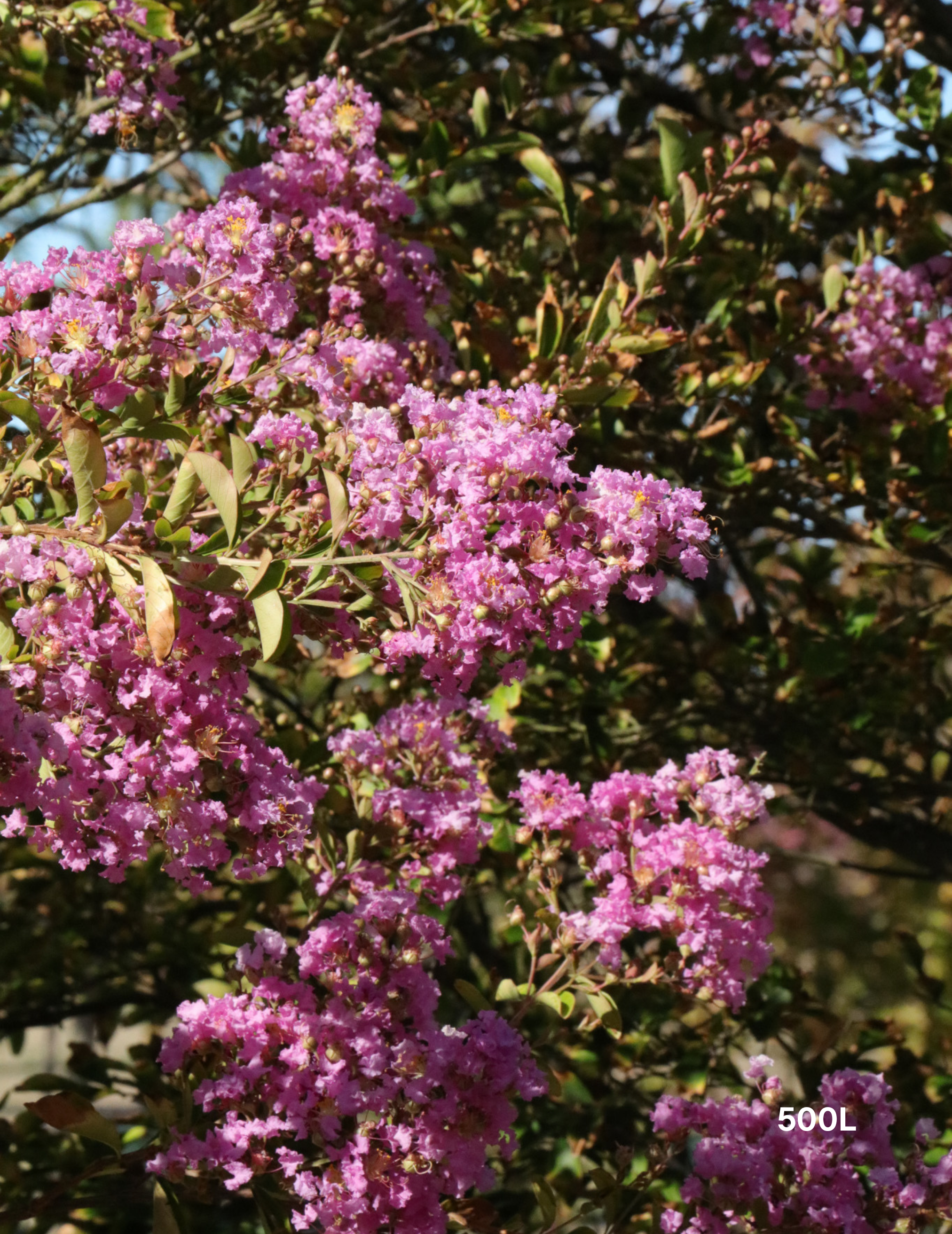
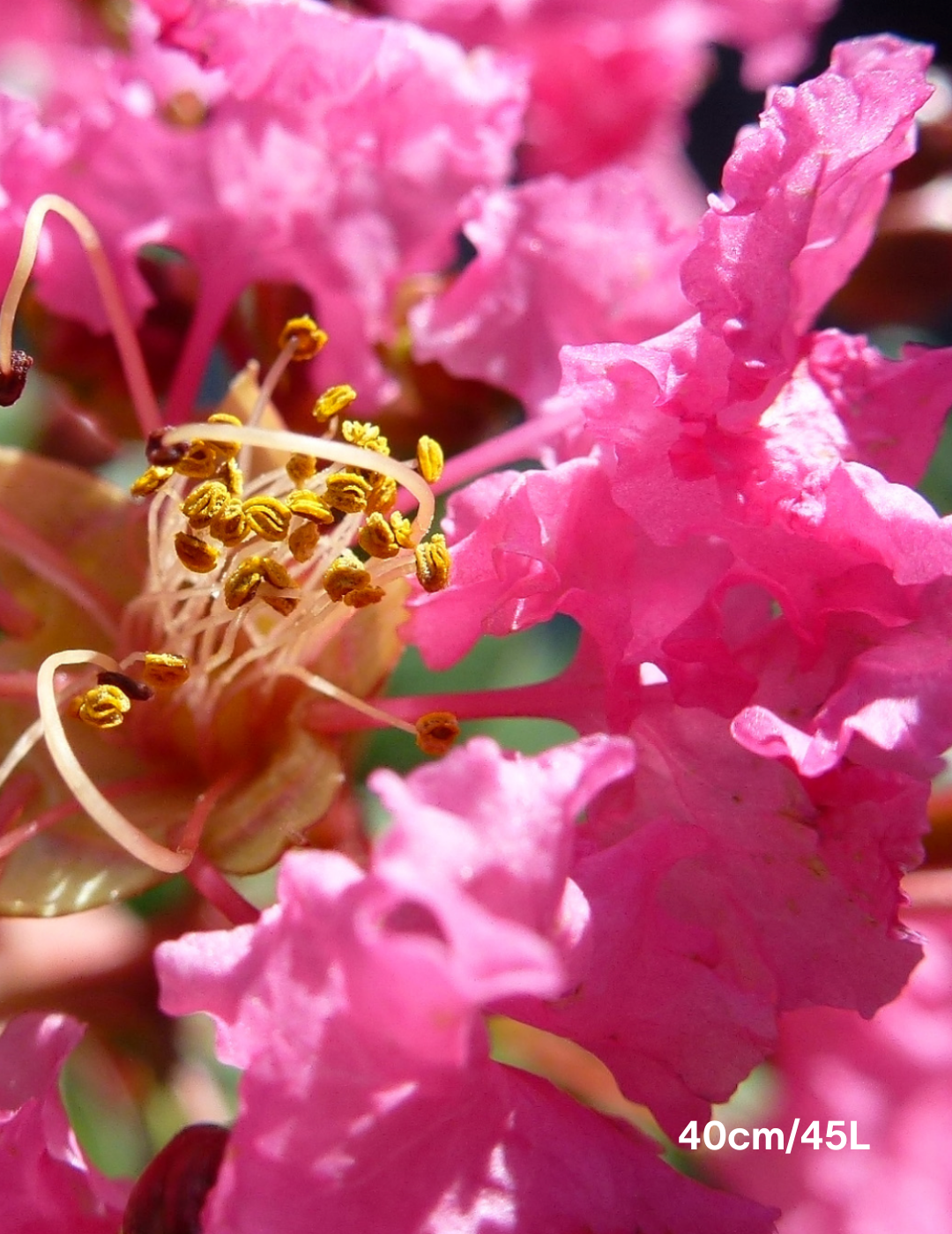

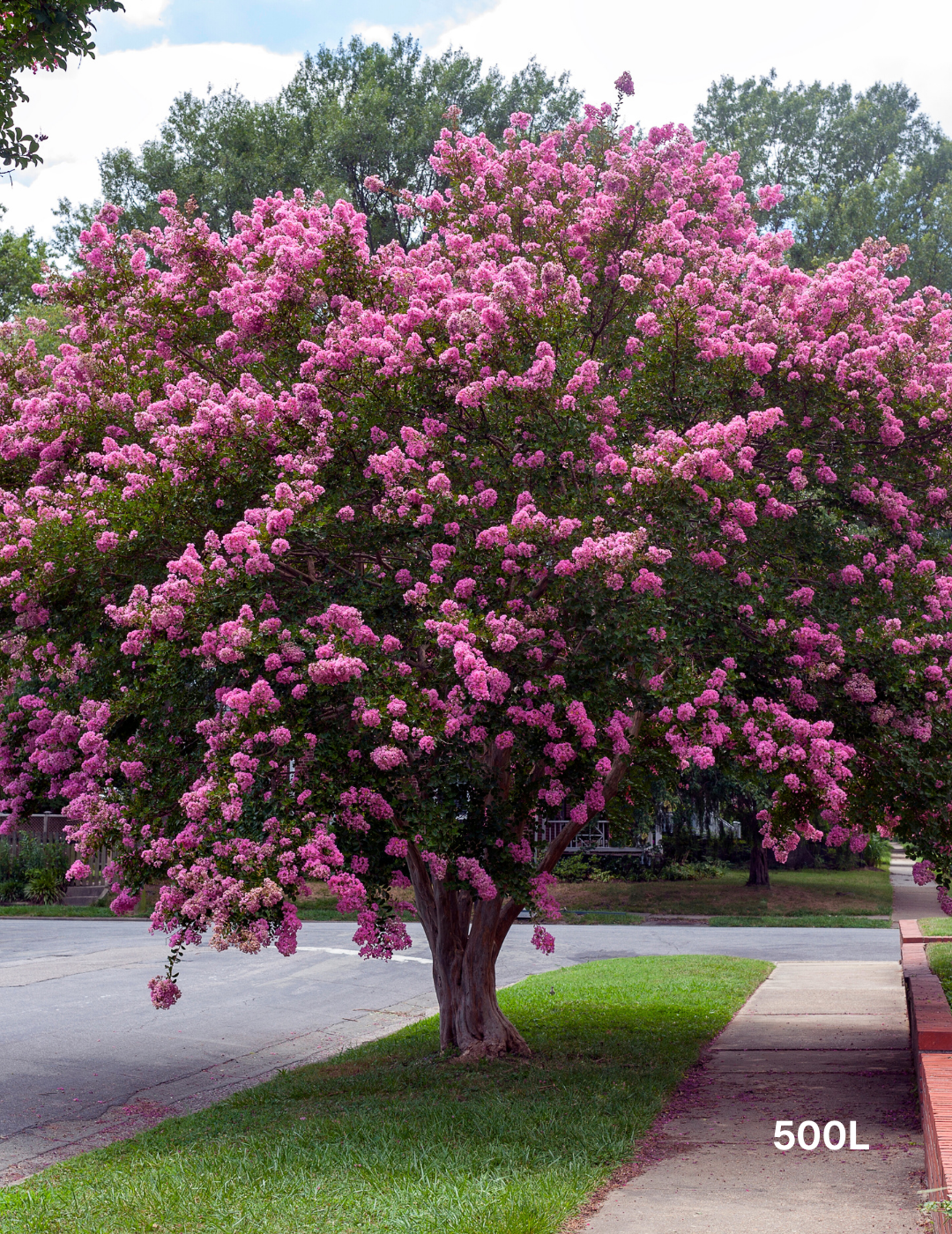
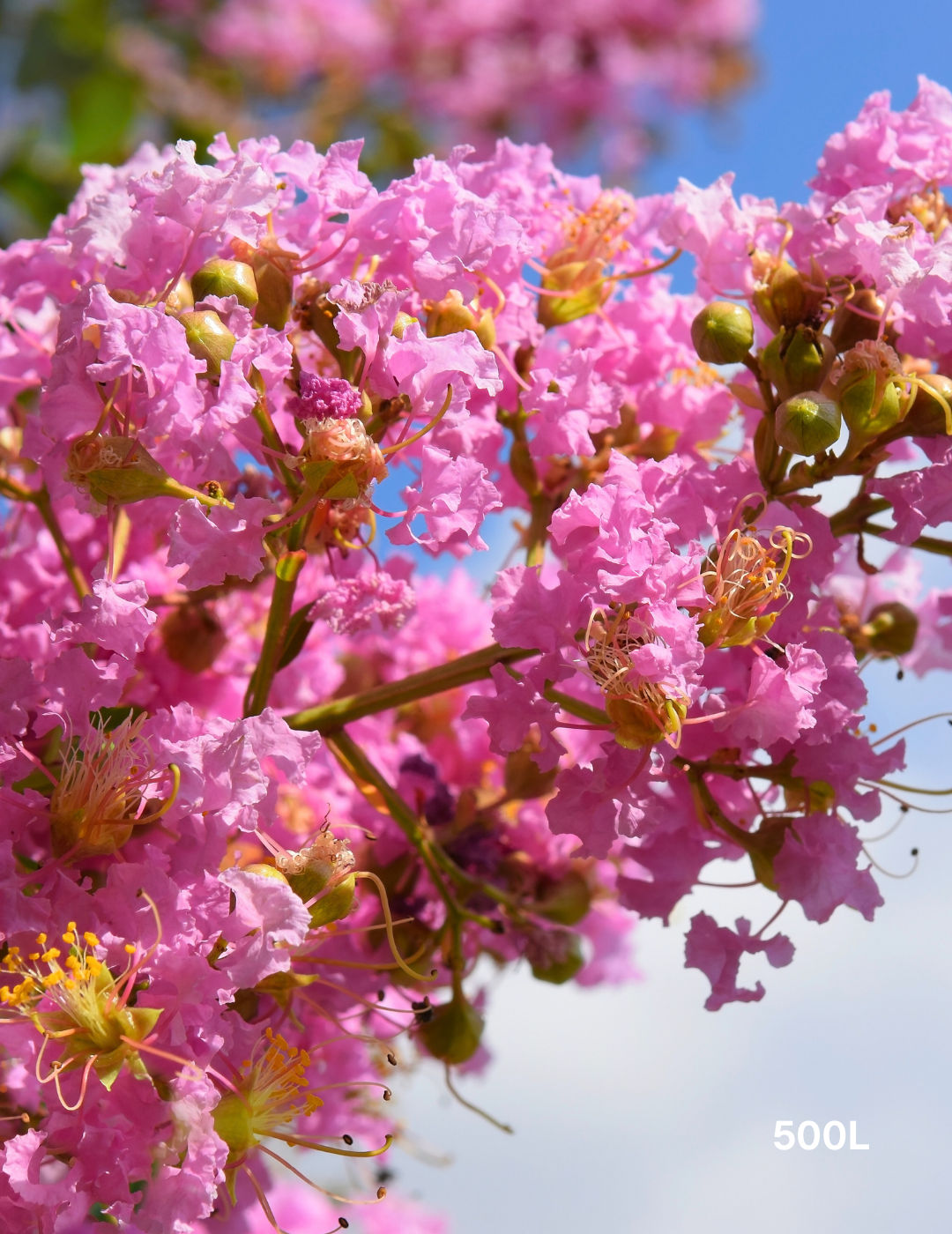
4 comments
mary hickie
Ipurchased a crepe myrtle plan in a pot and have now planted it in well draind & sunny open position but after a few weeks the leaves are looking like they are drying and dead
Amanda
I am looking for a crepe myrtle for my garden.
Size is most important factor.
I am planting in a narrow elevated bed and world like it to grow aprox 2m in height.
I do like the mauve flowers not fixed on color. I would like it to grow in a vase shape and possibly have the dark leaf.
How big does the Lapin grow?
Thank you
maria
my Crepe Myrtle refuses to flower each year.It has plenty of sun and l fertilise in early spring. Can you help?
THanks
Ekaterina
Good morning! What kind of soil is needed for caesia Silver Princess?
Leave a comment
This site is protected by hCaptcha and the hCaptcha Privacy Policy and Terms of Service apply.